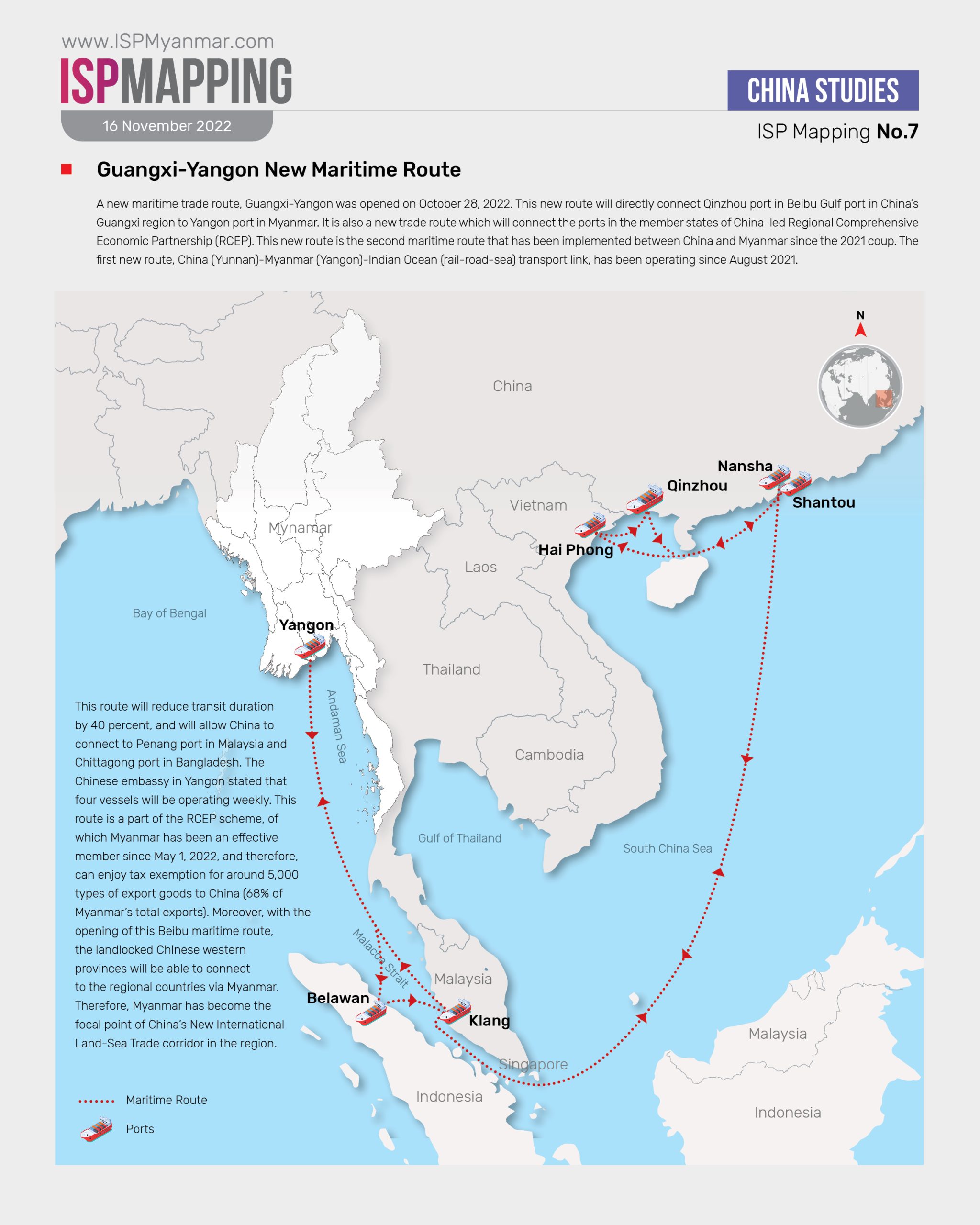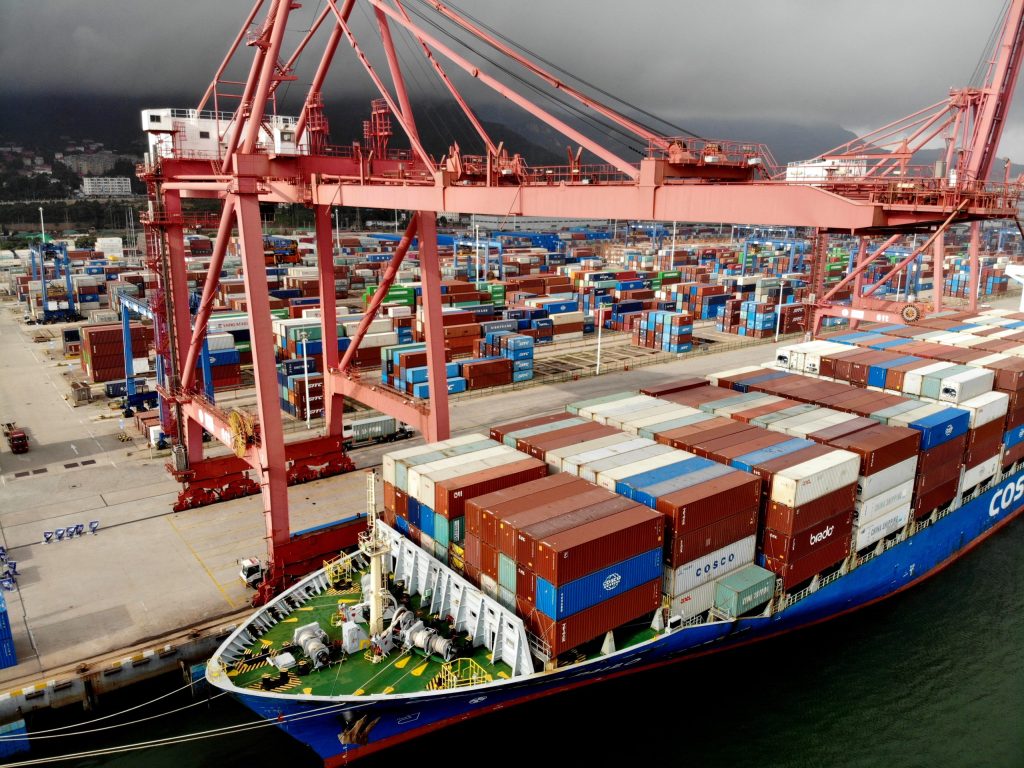ISP Mapping No. 7

A new maritime trade route, Guangxi – Yangon which will directly connect Qinzhou port in Beibu gulf port in China’s Guangxi to Yangon port in Myanmar, was opened on October 28, 2022. The new trade route will connect the ports in member states of the China-led Regional Comprehensive Economic Partnership (RCEP).
The Chinese Embassy in Myanmar announced that it intends to operate four cargo ships weekly along the new route, Guangxi – Yangon, and that transit duration will be reduced by 40 percent since goods can now be delivered directly from Qinzhou port to Yangon in just 12 days. It will only take 12 days because the cargo ship will first call at Malaysia’s Klang port, passing through the Malacca Strait from Qinzhou port in nine days before an onward journey to Yangon port taking three days. On returning from Yangon port, the ship will enter Indonesia’s Belawan port and Hai Phong port in Vietnam before returning to China’s Qinzhou port. The ports of call will be the Chinese ports of Qinzhou, Nansha and Shantou, Klang port in Malaysia, Yangon port in Myanmar, Belawan port in Indonesia and Hai Phong port in Vietnam.
China will also be able to connect to Penang port in Malaysia and Chittagong port in Bangladesh through this new route. This is the second new maritime route to be implemented between China and Myanmar since the 2021 coup. The first new route, China (Yunnan) – Myanmar (Yangon) – Indian Ocean New Transportation Corridor, has been running since August 2021.
∎ Why does it matter?
The Beibu gulf opens trade to China’s landlocked provinces and is an important sea outlet for the whole southwest of China. Therefore, of all seaports in China, Qinzhou port is being prioritized especially to connect to ports in ASEAN.
China has invited Myanmar to participate in the implementation of the new International Land-Sea Trade Corridor as a connection to ports in Beibu gulf. In 2019, a bilateral agreement was signed between the ports of Beibu and Yangon establishing a sister port relationship. Moreover, China’s Pan-Beibu Gulf Economic Cooperation has also been enhanced throughout the Beibu gulf.
Infrastructure projects are to be implemented in Myanmar under the China-Myanmar Economic Corridor project which is a part of China’s Belt and Road Initiative. In addition, cross-border economic cooperation zones and cross-border transportation routes are to be implemented under the Lancang-Mekong Cooperation (LMC) plan.
China is diversifying its ocean access avenues to connect to other regional countries through Myanmar, either through the China-Myanmar Economic Corridor project or the Lancang-Mekong Cooperation plan. Since Myanmar became an official RCEP member on May 1, 2022, around 5000 types of goods exported to China from Myanmar (68% of total exports) have become tax-exempt. Yangon port represents a strategic location for the China-led initiatives.
Since the coup, new trade routes using railways, roads and waterways have emerged between China and Myanmar. On the other hand, implementation of the China-led RCEP and LMC plans have enhanced intertwining economic and geopolitical interests. These cross-border trade routes not only benefit China’s economy but also China’s regional geopolitical interests. These new routes not only open new forms of sea access which China has long coveted, but also help spread China’s influence over Myanmar both geopolitically and economically. As a consequence, regional countries including Myanmar will likely participate in China-led policies not only in investment and trade sectors but also in the sectors of information and security.
It is important to continually research and monitor China’s ongoing influence on Myanmar’s economic and geopolitical issues leveraged through the establishment of new trade routes since the coup.
∎ Other relevant readings
Measures taken by China in Myanmar and other regional countries can be researched in records and reports produced by independent media and other organizations. Statements from the Chinese Embassy in Myanmar, reports from Chinese news media as well as the Beibu Gulf Port website can also be utilized.

